Total Shoulder Replacement (Shoulder Arthroplasty)
Anatomic and Reverse Shoulder Replacement
Erick Marigi MD – Robotic Shoulder Replacement Surgeon
Shoulder Replacement Surgery
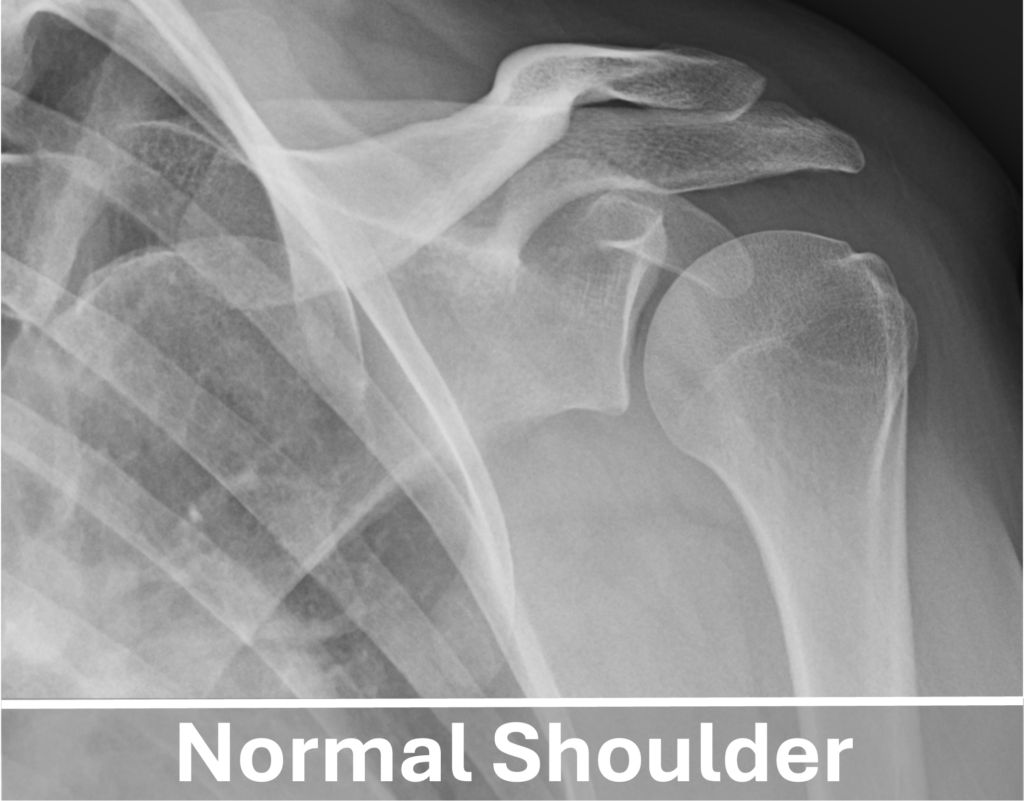
The shoulder is one of the most remarkable joints in the human body, enabling a wide range of movements such as forward elevation, external rotation, and internal rotation. As a complex ball-and-socket joint, its proper function relies heavily on the interplay of surrounding tissues, including the rotator cuff, scapular stabilizers, articular cartilage, and the joint capsule. Any breakdown in these structures, whether sudden or gradual, can lead to acute issues or chronic wear and tear, resulting in shoulder pain and dysfunction.
Shoulder replacement surgery is typically performed for patients presenting with activity and sleep limiting shoulder pain, stiffness, and loss of function despite a comprehensive non surgical treatment approach. Osteoarthritis (loss of cartilage), rheumatoid arthritis, rotator cuff tears, avascular necrosis, and fractures are some of the most common causes of shoulder pain and need for shoulder replacement surgery. Accordingly, the goals of shoulder replacement surgery are to relieve pain, increase shoulder function, and to improve quality of life.
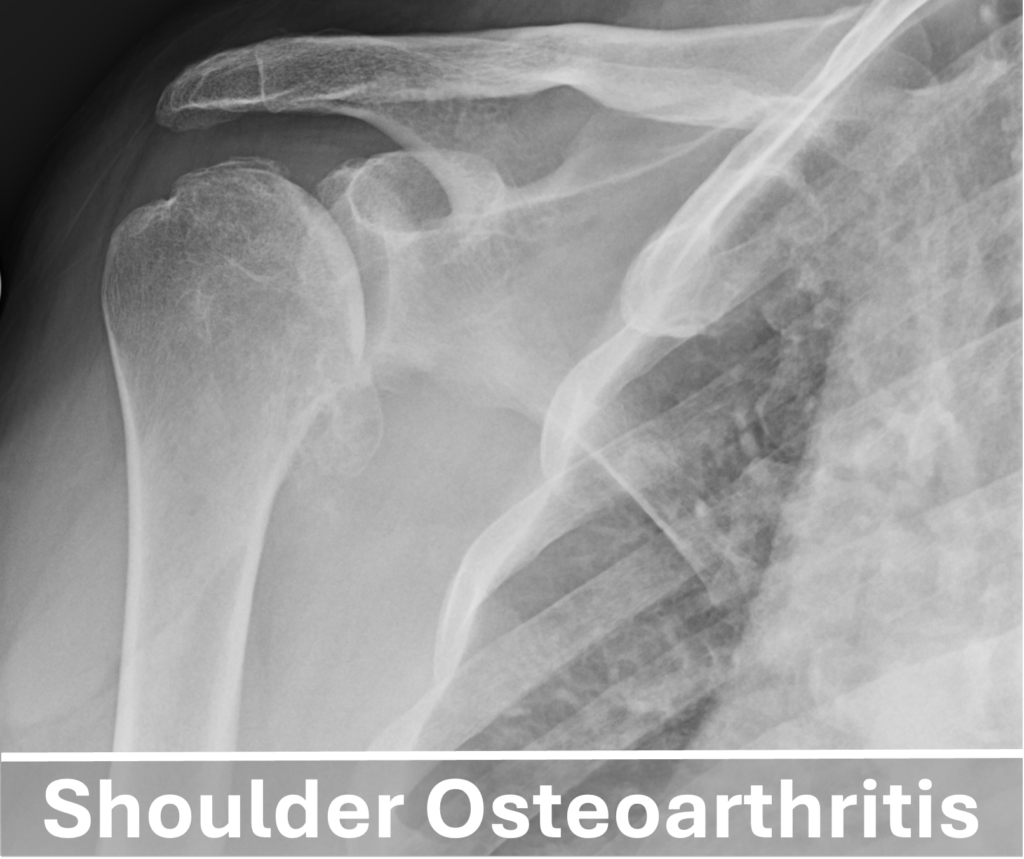
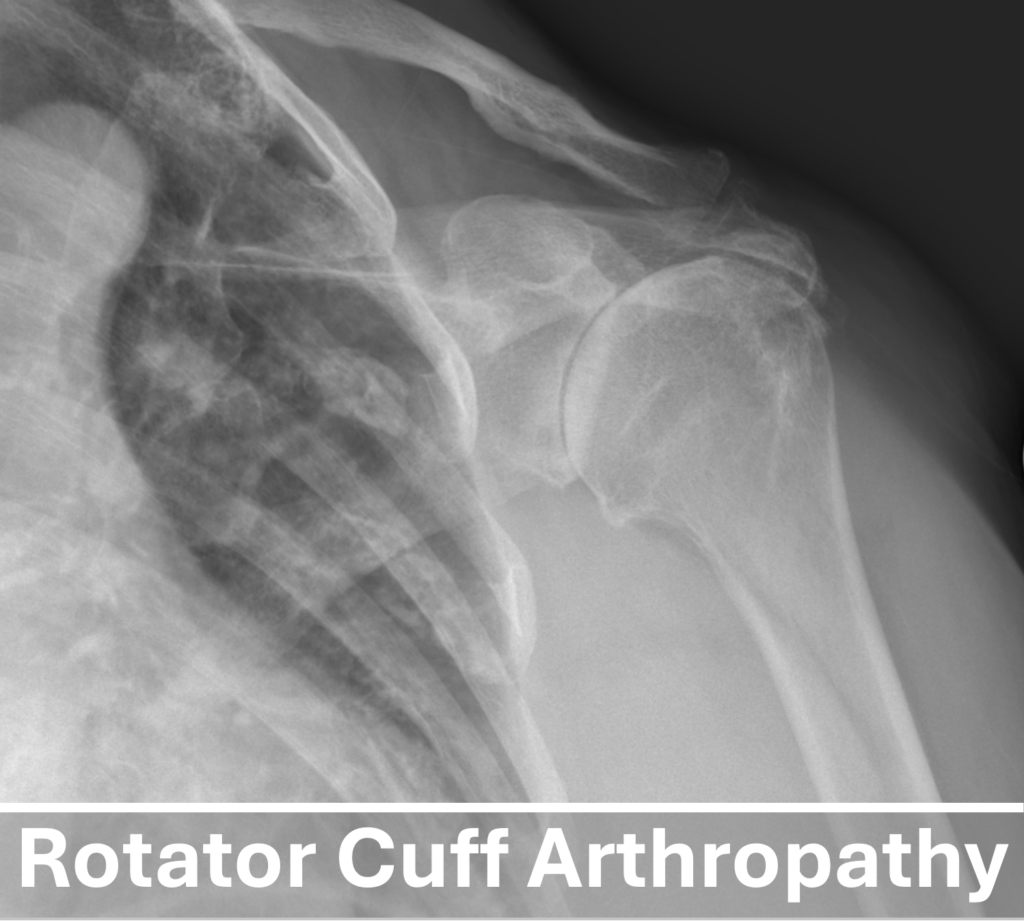
Because of the shoulder’s distinct features, precision at the time of surgery is critical. As such, the more exact a surgeon’s tools are the better they can plan and perform your surgery. Mayo Clinic was the world’s first institution to perform a robotic total shoulder replacement in April of 2024. Since then we have utilized robotic assistance to perform highly precise, accurate, and reliable shoulder replacements. This innovative technology takes into account each patient’s unique anatomy and biomechanics leading to a truly personalized shoulder replacement that promotes the best possible outcome.
What is a Robotic Assisted Shoulder Replacement (Shoulder Arthroplasty)?
A robotic assisted shoulder replacement is similar to a traditional shoulder replacement, except we utilize a robotic arm to assist with removing damaged tissue and preparing the bone for implantation of the final components. In general, use of the robotic arm allows us to execute our surgical plan with improved precision to the desired millimeter and degree. In more complex cases, the robotic arm can also allow for shoulder replacements to be performed through a more minimally invasive approach with less soft tissue exposure.
How does a Robotic Assisted Shoulder Replacement Work?
Before surgery, you will get a specialized computed tomography (CT) scan that creates a series of 3-D images of the shoulder joint. Utilizing a combination of your goals, physical exam, and the 3-D images, your surgeon will plan the bony preparation and final component position of your shoulder replacement. Notably, the robot allows for precision to the millimeter, picking the most optimal implant size and position.
At the beginning of surgery, your surgeon uses a series of arrays to confirm that the robot received the correct positioning information and is spatially concordant or can “see” your shoulder. Then, the robotic arm positions itself according to the preoperative measurements and then your surgeon uses the robotic tool throughout the procedure. The robot does not perform the surgery on its own, instead your surgeon works with the robot to prepare the bone according to the preoperative plan. Afterwards, your surgeon will place the shoulder implants in the robotically prepared bone which allows for more precise placement of the implants in the desired position.
Who is a Candidate for a Robotic Assisted Shoulder Replacement?
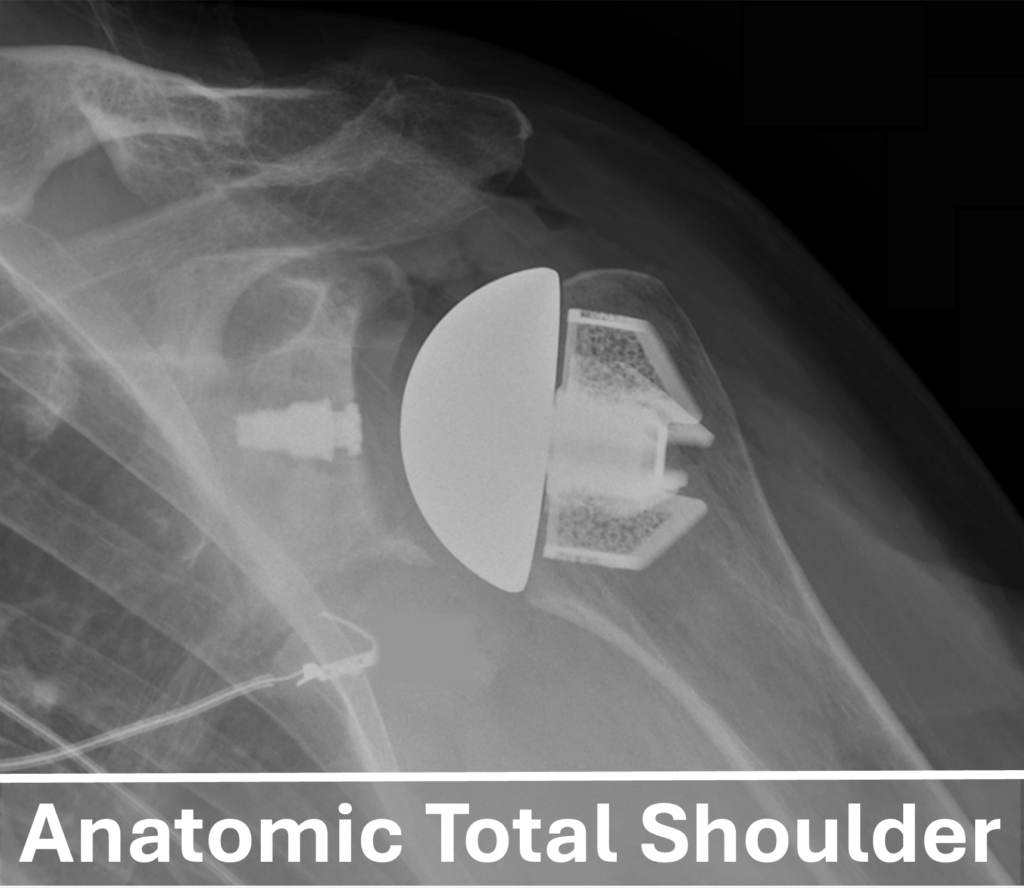
If you are a candidate for a traditional total shoulder replacement, it is likely that you are a candidate for robotic-assisted shoulder replacement. Robotic assistance is used for both anatomic total shoulder replacement and reverse total shoulder replacement.
An anatomic total shoulder replacement involves replacing the damaged humeral head (ball) with a round metal head, and the glenoid cavity (the socket) with a durable, polyethylene component. This procedure is best suited for patients with an intact rotator cuff and minimal bony deformity, particularly of the glenoid.
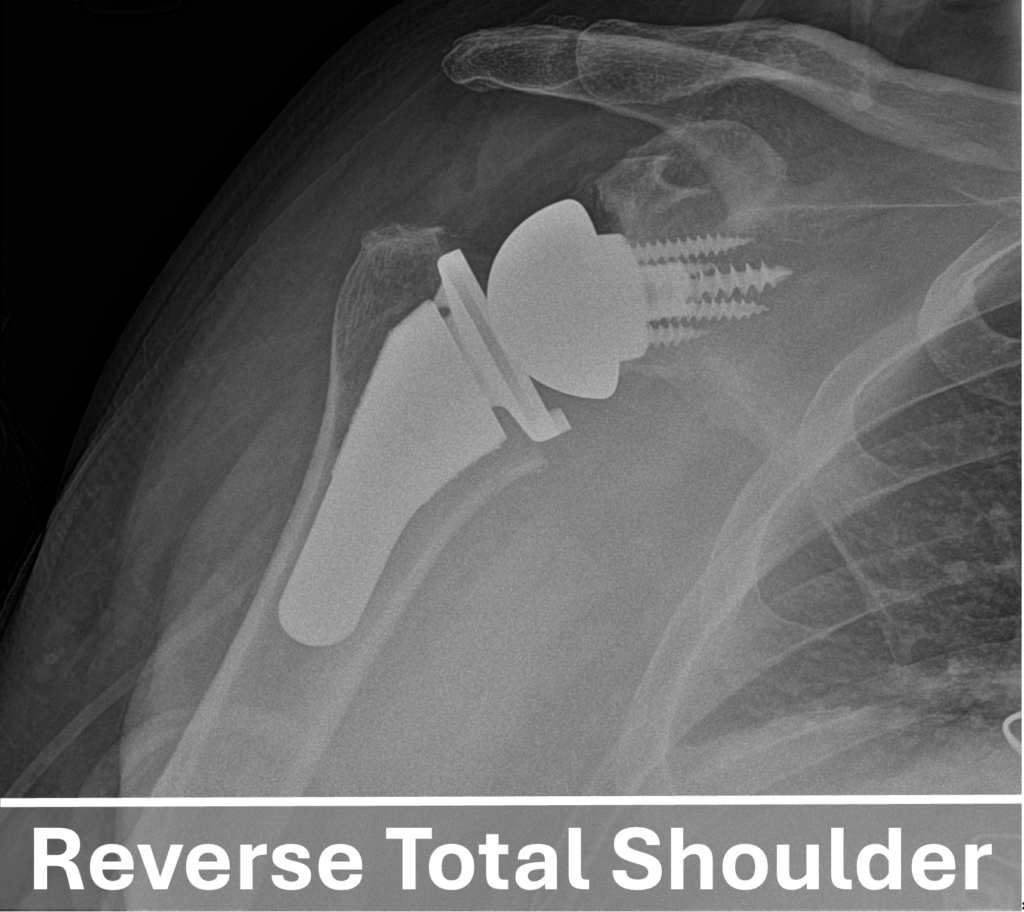
The reverse total shoulder replacement is a more recent innovation that is designed to address conditions that the traditional anatomic total shoulder replacement cannot. In this procedure, the position of the humeral head (ball) and glenoid (socket) are reversed: the metal ball is attached to the glenoid and the plastic is now on the humerus. This reversed design allows the deltoid muscle, rather than the compromised rotator cuff to power and move the shoulder. Therefore, this procedure is particularly beneficial for those with rotator cuff tear arthropathy, severe arthritis with rotator cuff tears, and significant bone deformity of the glenoid.
What are the Advantages of Robotic Assisted Shoulder Replacement?
- Enhanced Surgical Planning: Specialized 3-D images are obtained in preparation for surgery. These images allow for preoperative implant sizing and better management of individual differences between patients, leading to optimal component fit.
- Greater Precision: Robotic assisted technology allows for safe bone preparation with precision and accuracy beyond conventional human performance.
- Optimal Component Position: Robotic assisted technology enhances your surgeon’s expertise with better execution of their desired plan. This allows for better positioning of the shoulder implants and optimization of implant longevity.
What is the Recovery Process After a Robotic Assisted Shoulder Replacement
- Recovery from a robotic shoulder replacement and traditional shoulder replacement are very similar.
- After surgery, Dr. Marigi and your care team will closely monitor your progress, manage discomfort, and prepare you for your at-home recovery. Some patients may spend a night in the hospital, but most will recover at home or in a hotel if they are visiting from afar.
- Full recovery, allowing a return to all activities, can take vary depending on the implant selected but will occur between 4 months to a year.
If you are considering a shoulder replacement (shoulder arthroplasty) or want to learn more about robotic assisted shoulder replacements, contact Dr. Erick Marigi, an orthopedic shoulder surgeon serving the communities of Jacksonville, Florida and beyond.